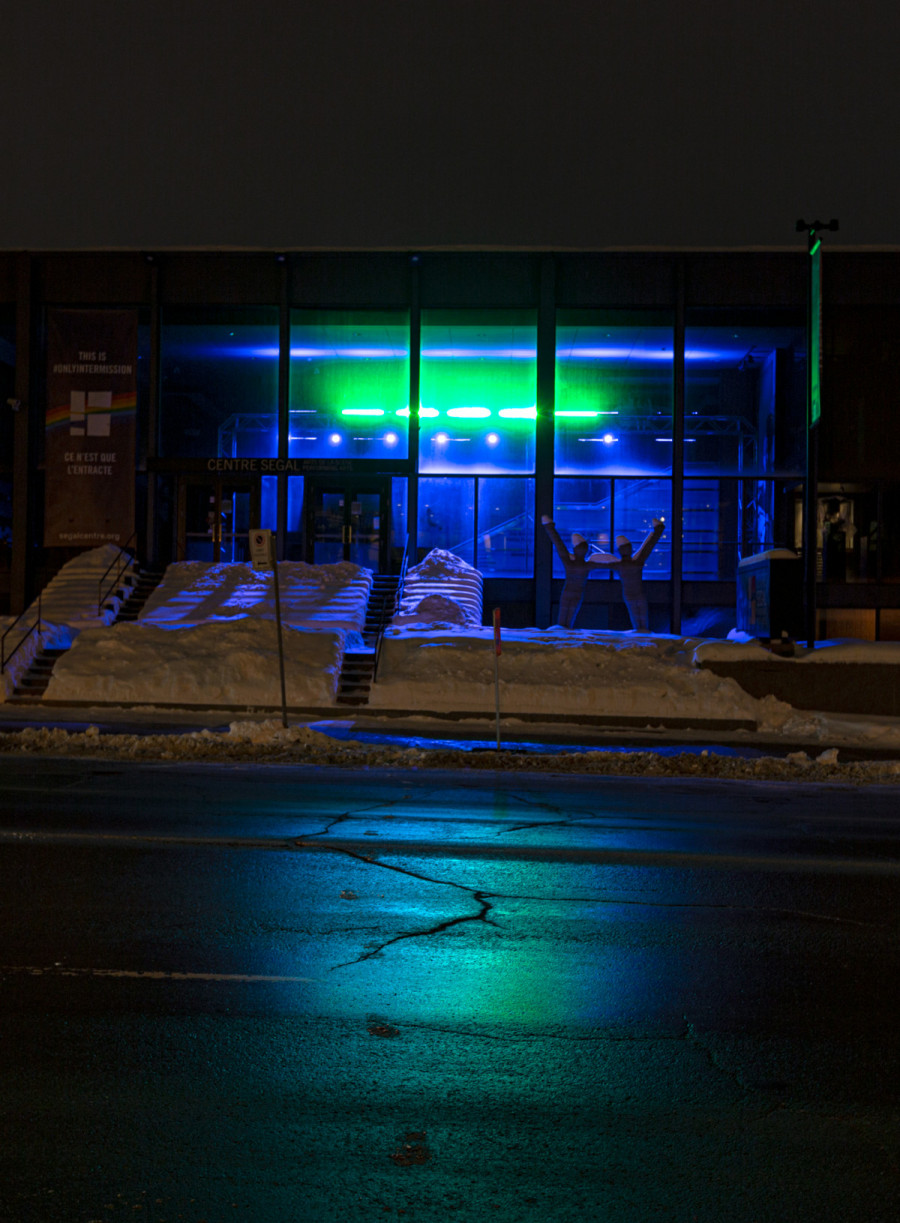Timothy Rodrigues’s ‘Liberation’s Radiance’ lights up Black History Month
Black Theatre Workshop casts light designer to mark the annual observance
A single body of light illuminates the space at the Segal Centre for Performing Arts every evening—from 5:30 p.m. to 7:30 p.m.—spanning the shortest month with the mission to elevate BIPOC voices through visual art.
Liberation’s Radiance, a light installation, floods, floats, and dances at an otherwise busy theatre lobby. To avoid breaking curfew, people may have to see the light installation in a hurry.
Concordia alumnus Timothy Rodrigues, designer-in-residence at Black Theatre Workshop, created the instalment to commemorate Black History Month.
“There was this long transition of me still working in contemporary dance while designing,” said Rodrigues, adding how he used to design for contemporary dancers, but he also worked as a theatre technician.
Technician work was a side hustle for Rodrigues, to pay the bills but also learn the skills necessary in assembling lighting for the theatre’s stage from the ground up. Rodrigues said he wouldn’t have acquired the ethics required for building a proper set if it weren’t for that experience.
The inspirations for the installation’s colour, a flowing emerald green, came from the novel by Ta-Nehisi Coates, The Water Dancer, a fantasy story set in a pre-Civil War South. With an experimental style, the novel attempts to grasp Toni Morrison’s chances for liberation.
Liberation’s Radiance visualizes the green spectral light that floats out of a river, the green-glow compassing two figures in the dark night, a nocturnal scene pulled from the novel.
Rodrigues draws a parallel, from Coates’s novel, the story of Moses in the Old Testament, and ancestral stories performed by Black Theatre Workshop in their stage plays as well.
“[...]Black art is part of the world. It’s part of my world [...] But I am painfully aware that other people don’t see things that way.” — Timothy Rodrigues
The way Rodrigues explains light design is almost constitutional to the theatre's stage. In design, the sketch or blueprint is what Rodrigues calls a “lighting plan.” A light installation, once pre-sketched, may contain a certain number of lamps depending on the desired structure, positioning and height. In this case, Rodrigues used LED lighting.
After the set-up follows the light positions and programming of light queues, to test coordinating the actors and scenes on stage. Once a show is over, there is a tearing down process, termed “the strike,” meaning the complete removal of all pieces that have been built.
The marketing coordinator at Black Theatre Workshop, Giordanno Bruno, sees Liberation’s Radiance as a shining beacon of light and hope.
“We are all looking forward to [working] more with Mr. Rodrigues,” Bruno stated. The coordinator mentioned that while he is not familiar with Rodrigues’s previous work, after an entire year of seclusion and political turmoil, seeing something new feels refreshing.
Rodrigues’s passion for light design was borne out of contemporary dance. “They both play off each other,” he said. He also noted that a variety of dance disciplines—whether underground or taught in dance studios—carry on as art forms that may liberate them from their own circumstances.

“Liberation is a state,” Dayane Kamana Ntibarikure said. “We still don’t have full equity.” Ntibarikure thinks that liberation has not yet been achieved.
Ntibarikure also has a background in theatre and dance. She partook in the Artist Mentorship Program at Black Theatre Workshop in the past and is currently a BIPOC artist advocate and artistic advisor for the Segal Centre.
Ntibarikure came up with the idea to show Black Theatre Workshop’s AMP artists with a weekly online virtual series, to reflect more on Liberation’s Radiance and chat.
“He is a very well-rounded artist,” said Ntibarikure, adding that Rodrigues does his research for stage lighting. “He understands the world of theatre as a whole.”
Rodrigues was the light designer for one of Ntibarikure’s past performances. Ntibarikure recalls when she played the starring role of Claudette in How Black Mothers Say I Love You, a play written by Canadian playwright Trey Anthony.
Rodrigues strives to make Black history and black voices part of his art and Montreal’s makeup in general.
“I say that and I know that Black art is part of the world. It’s part of my world,” Rodrigues said. “But I am painfully aware that other people don’t see things that way.”
Rodrigues urges others who happen to view Liberation’s Radiance to take an extra step.
“Black history is Canadian history.”


_600_832_s.png)



